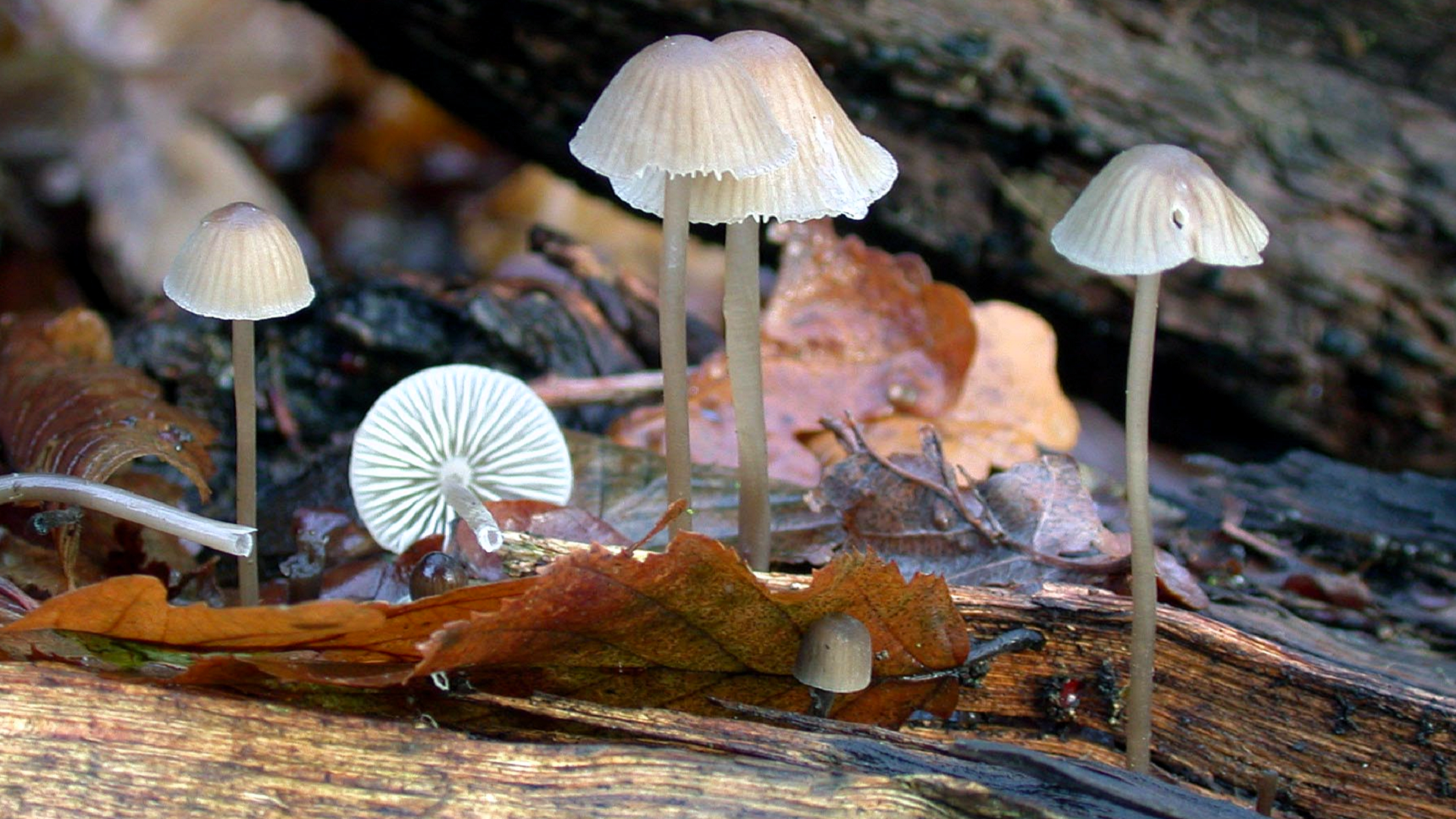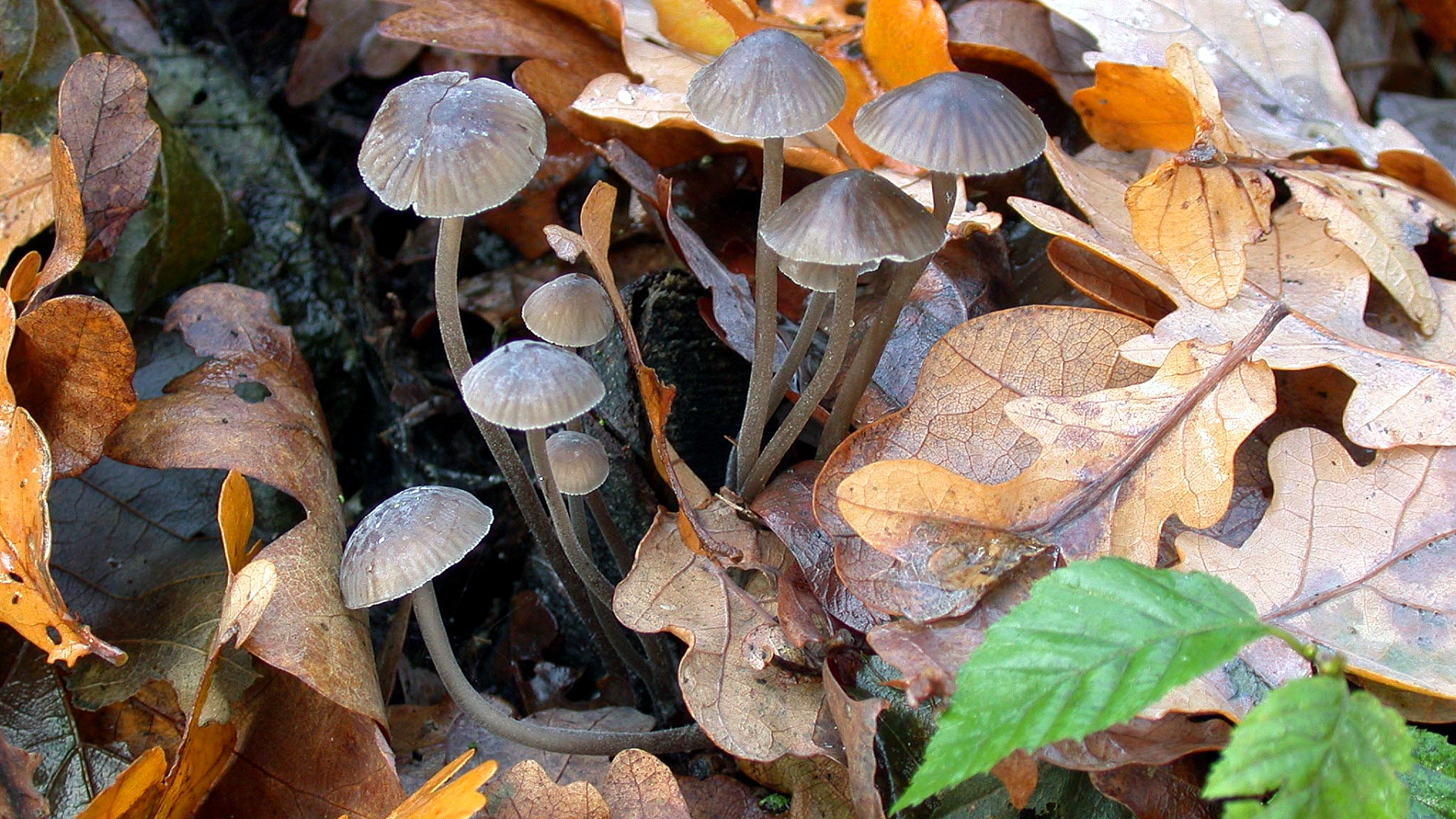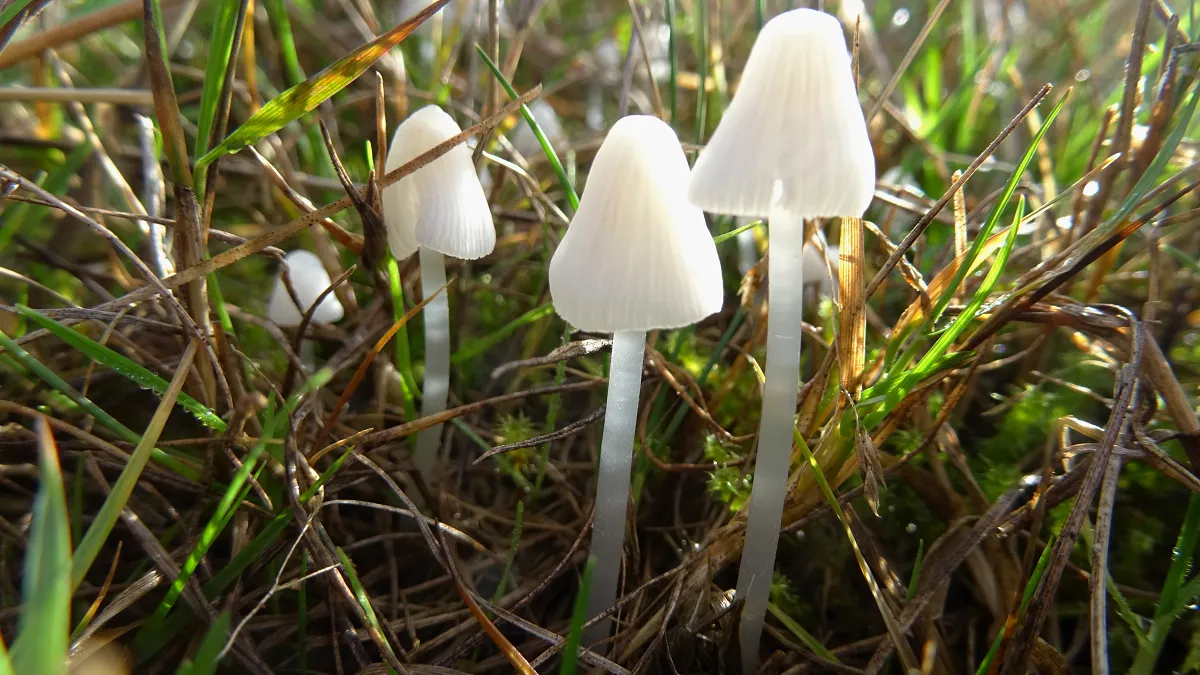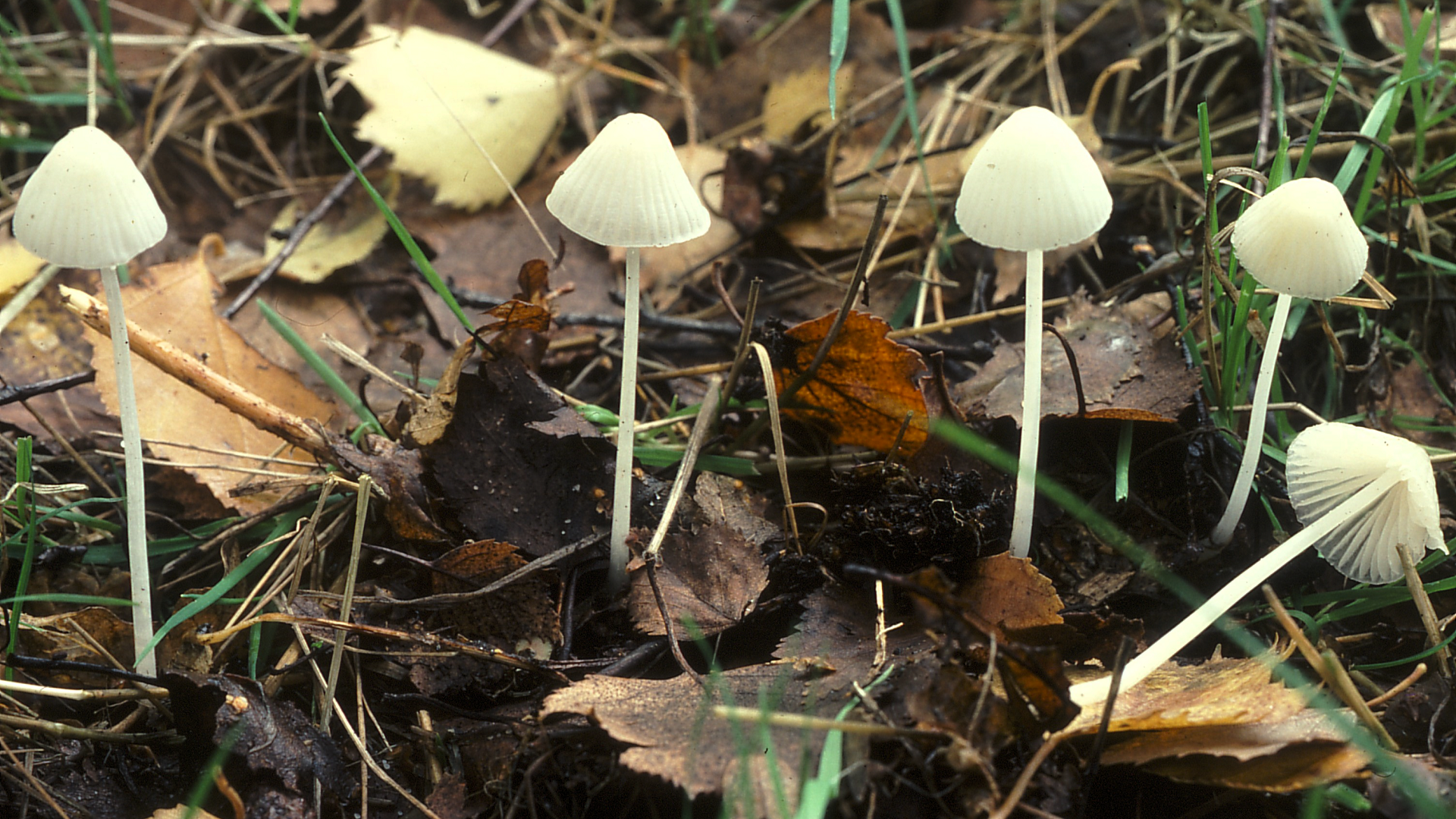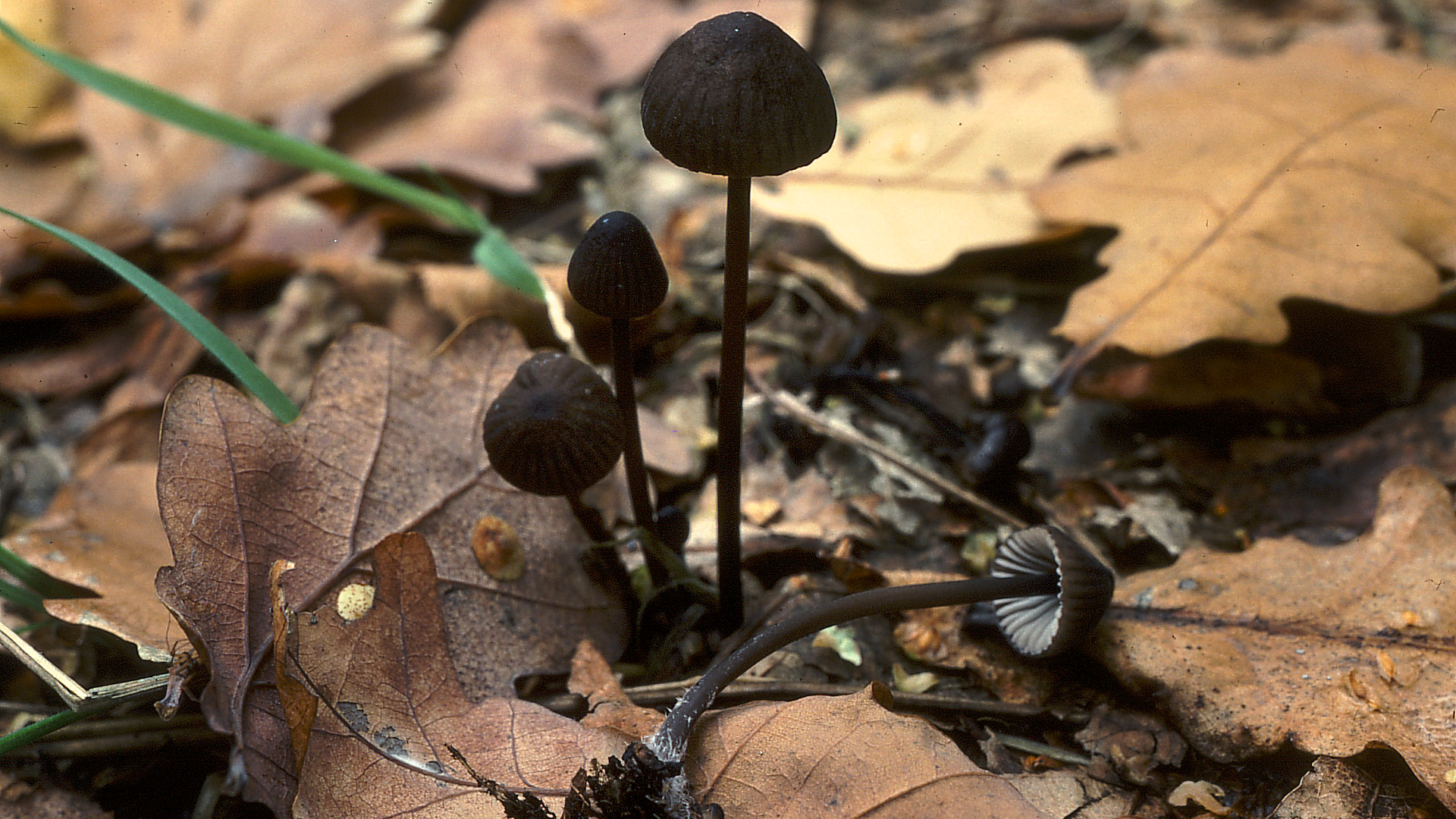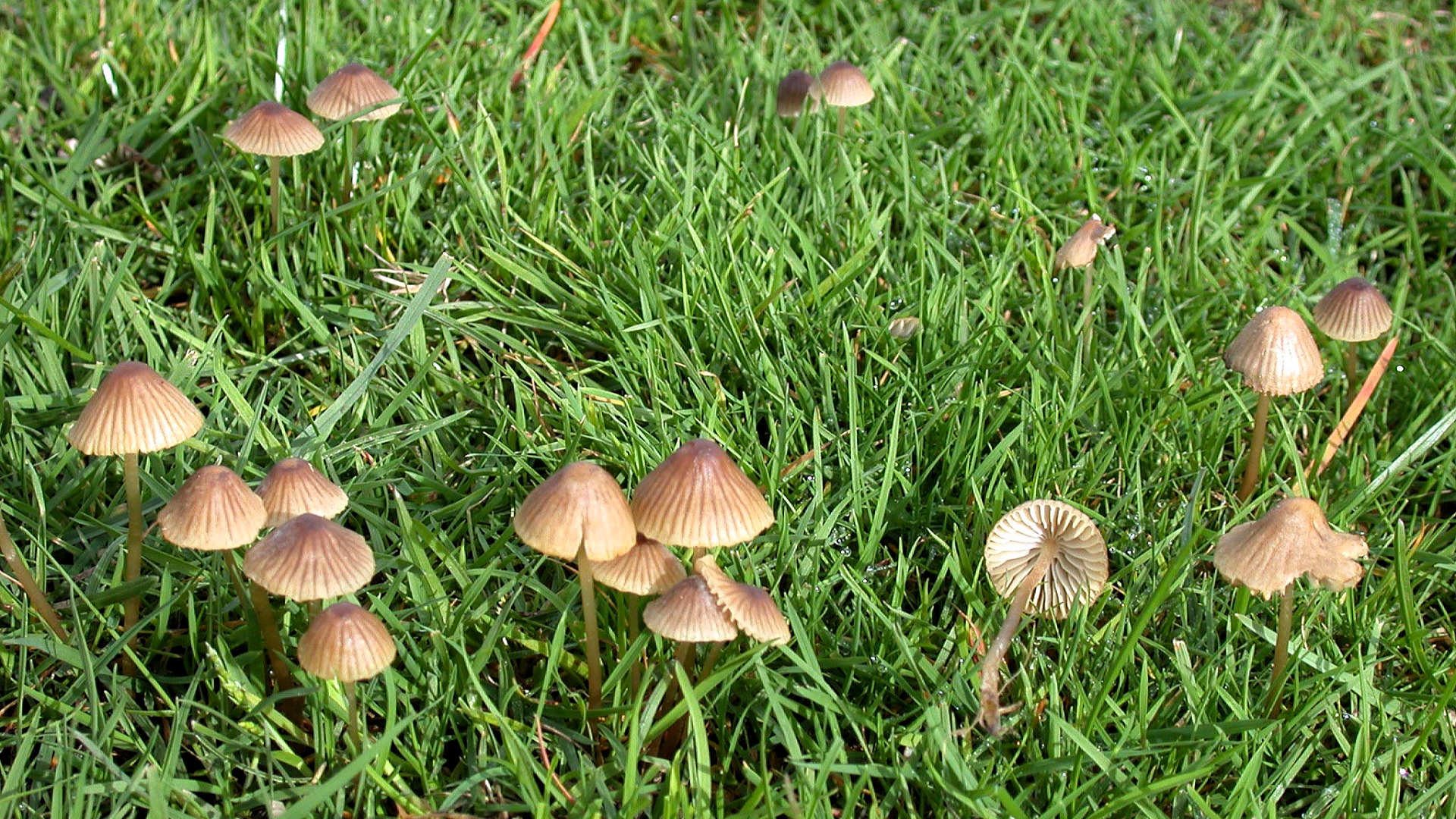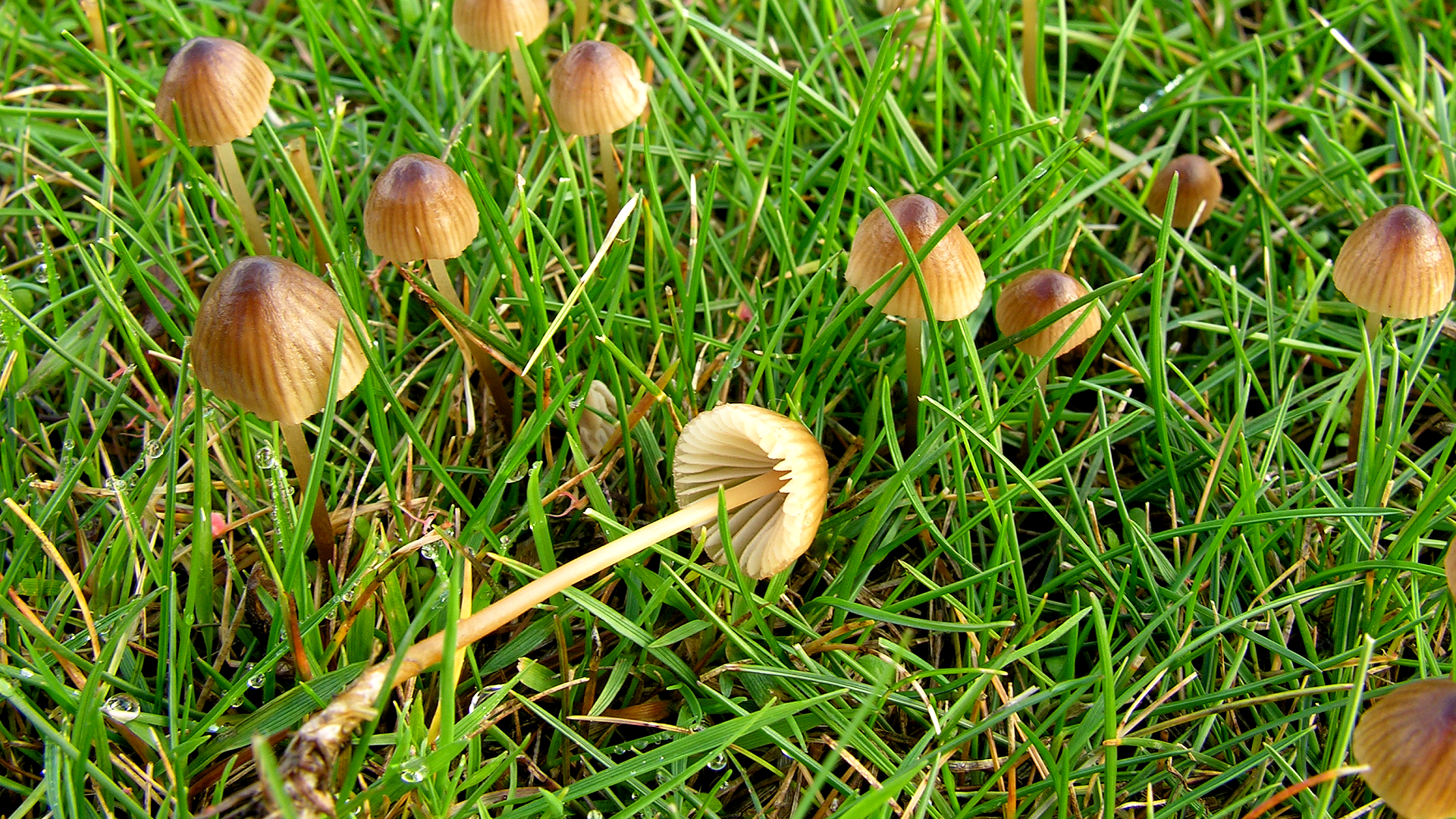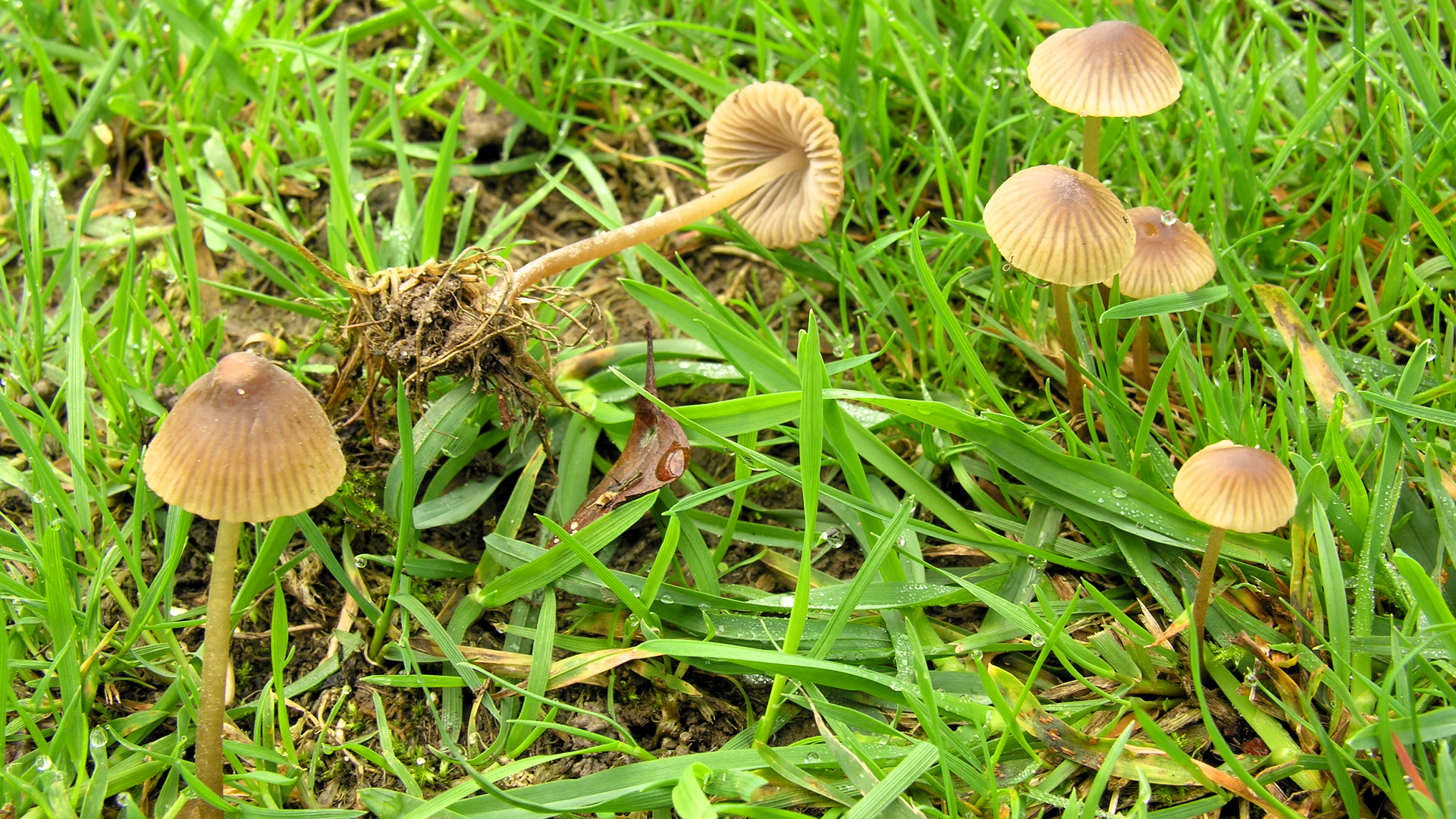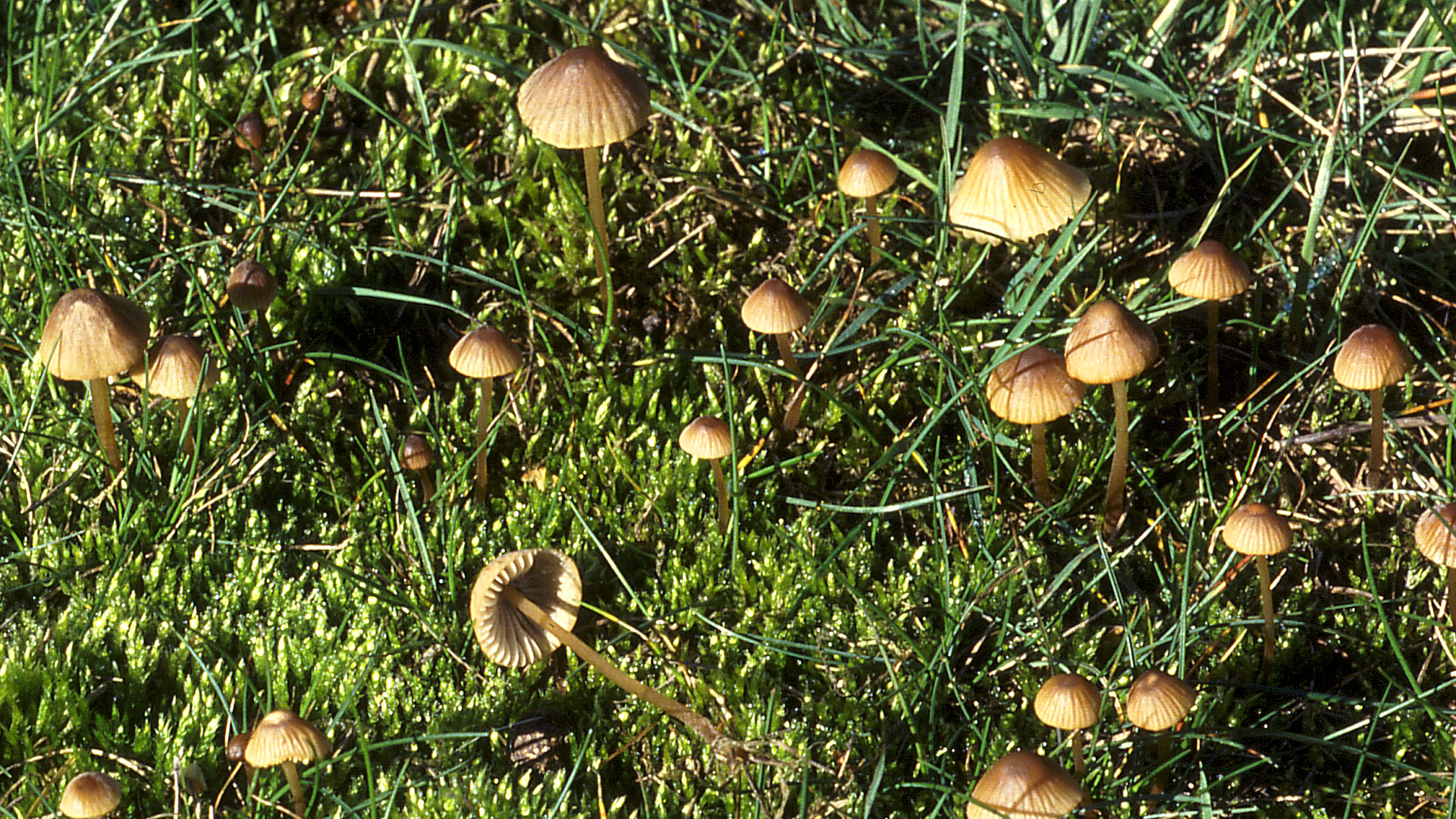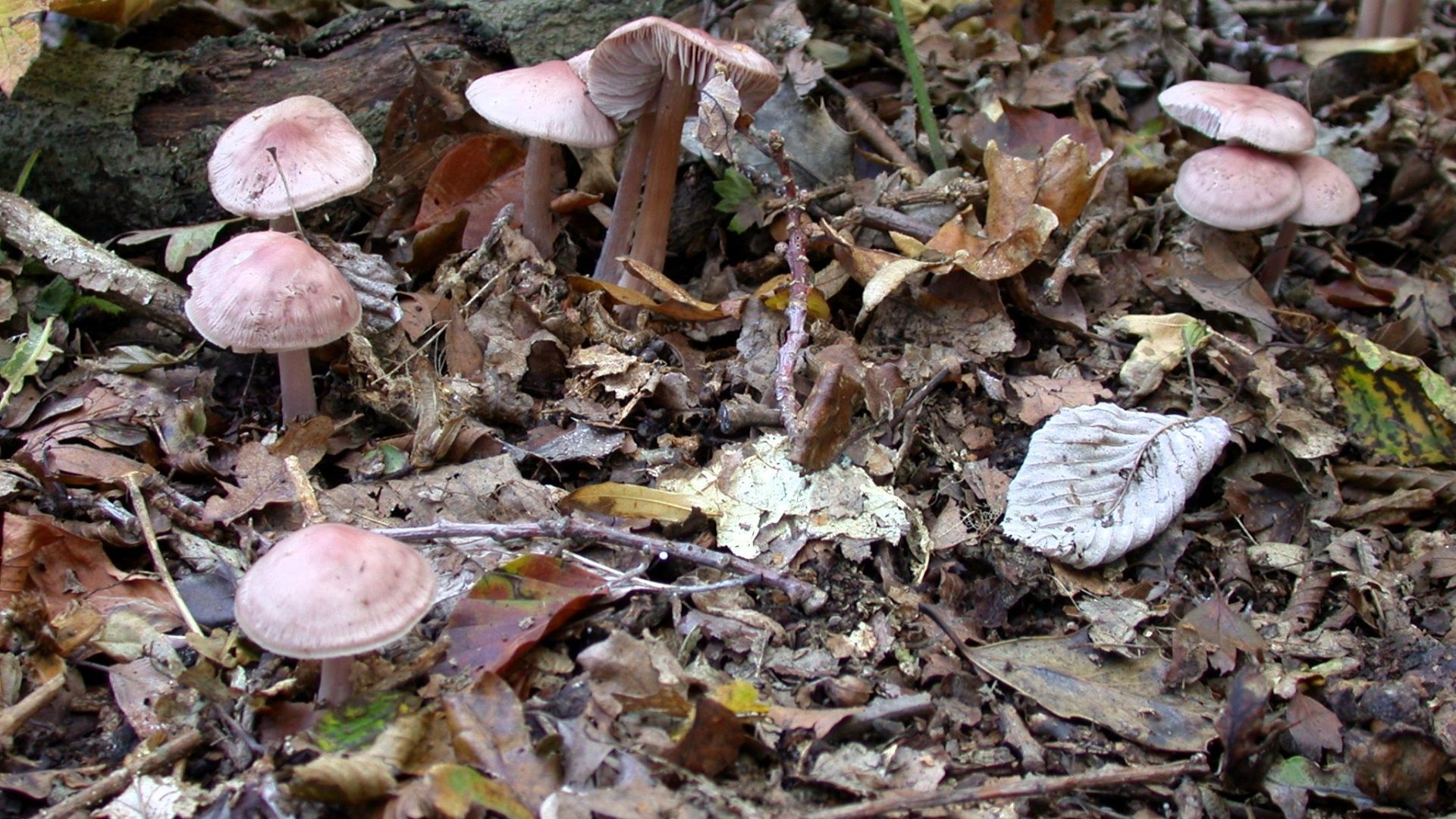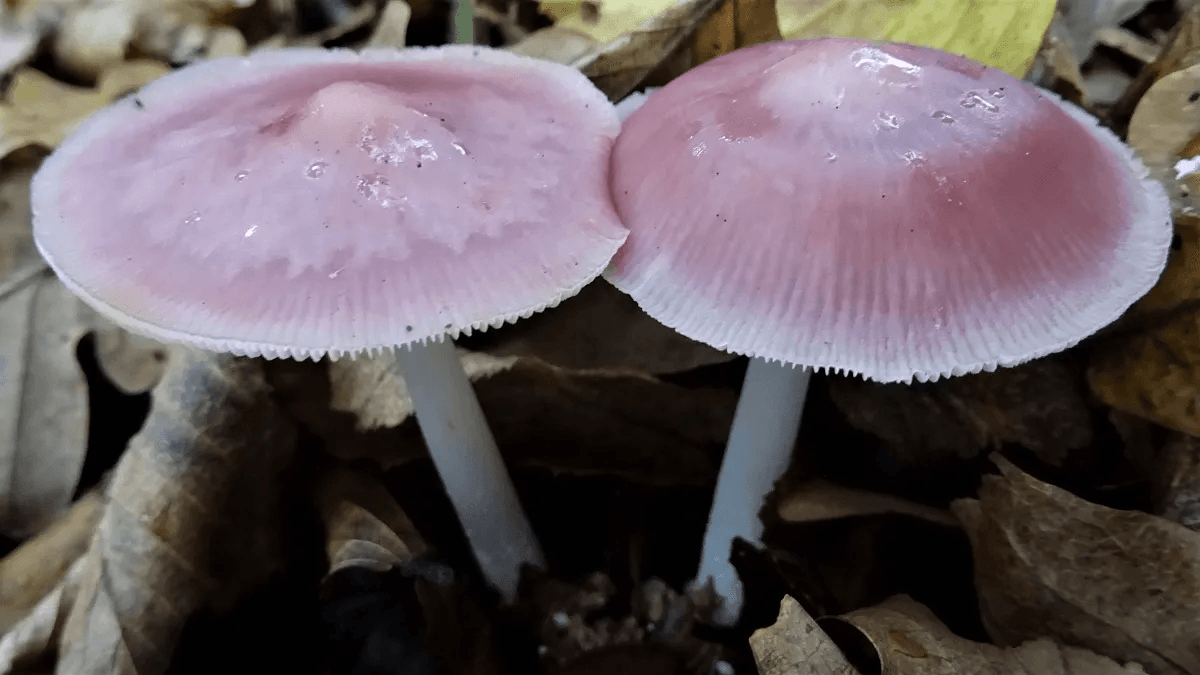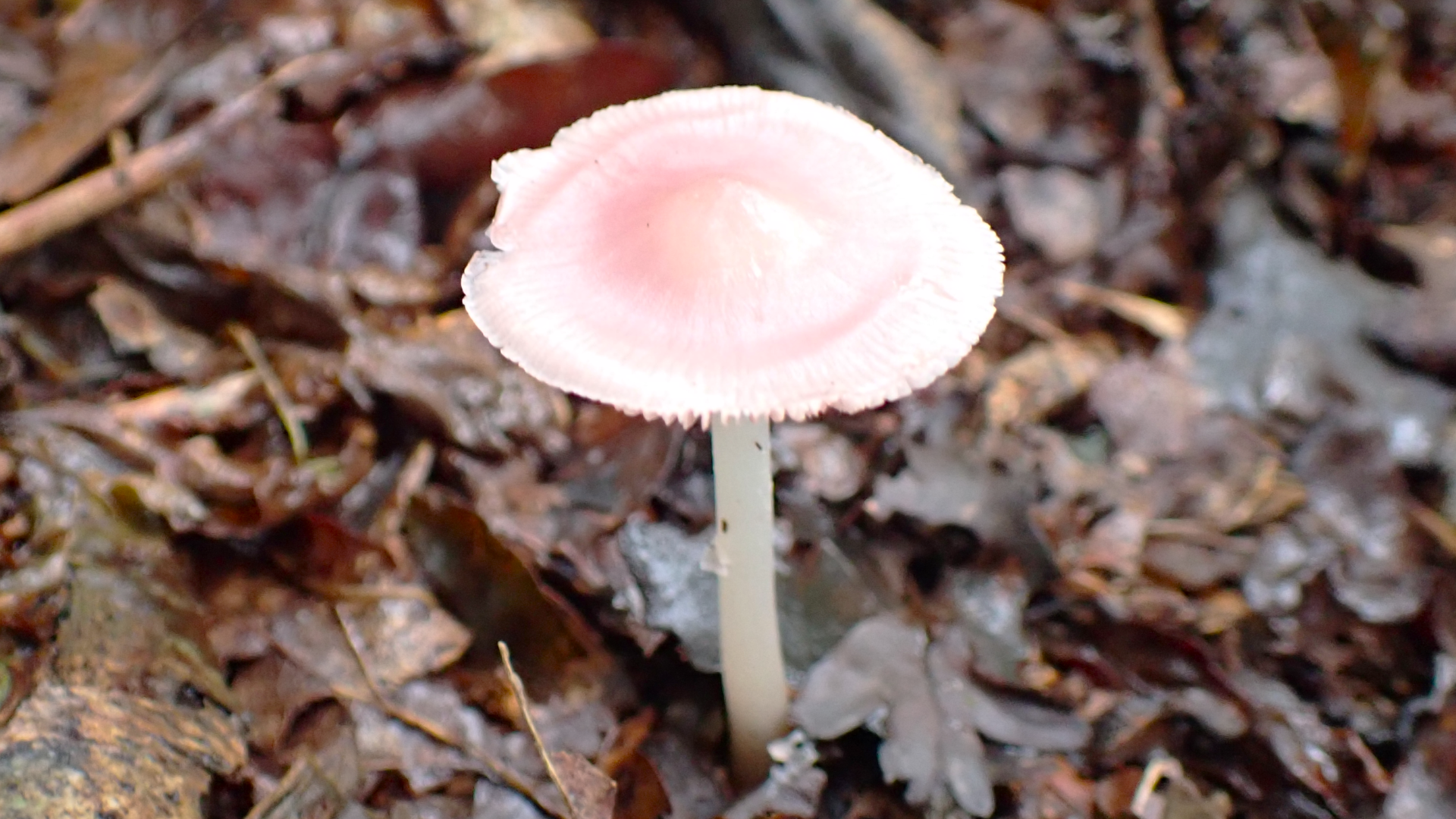Fungi Foray
MYCENACEAE
Milking Bonnet
Mycena galopus
When the fruiting bodies of this woodland mushroom are young and fresh the stems release a white milky fluid when snapped. There are two other varieties (see below).
MYCENACEAE
White Milking Bonnet
Mycena galopus var. candida
A white variation of the Milking Bonnet.
MYCENACEAE
Black Milking Bonnet
Mycena galopus var nigra
A black variation of the Milking Bonnet.
MYCENACEAE
Brownedge Bonnet
Mycena olivaceomarginata
Short grassland autumn species. Its conical brown or beige caps have a diameter less than 5cm. The hollow stipes are much longer than the cap diameters. Pale gills.
MYCENACEAE
Lilac Bonnet
Mycena pura
Saprobic fungus that is often found in leaf litter in broadleaf woodland. Not common in open grassland.
MYCENACEAE
Rosy Bonnet
Mycena rosea
Common woodland species usually found in leaf litter. Caps measure up to 60mm diameter and are pinkish with a whitish margin.
© hainaultforest.net. All rights reserved.


